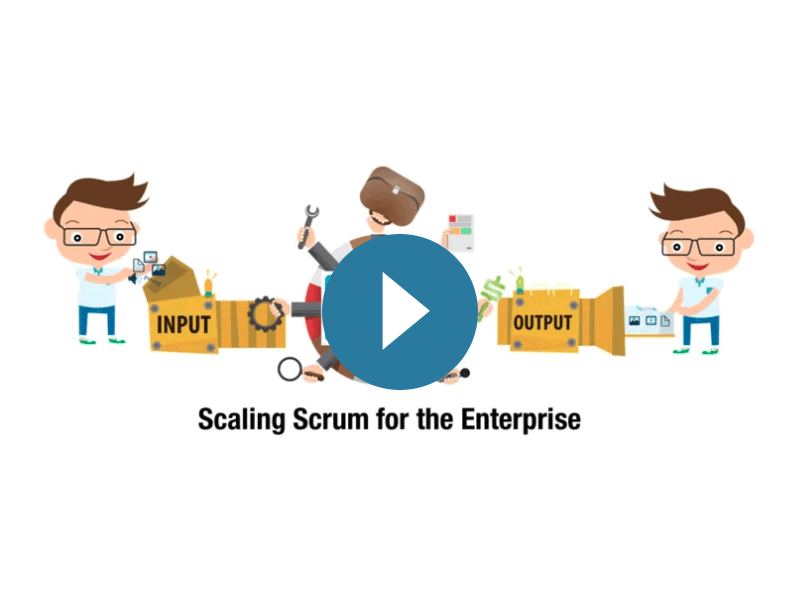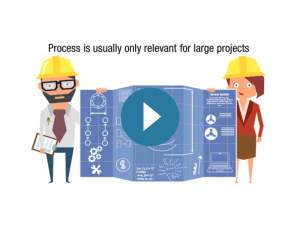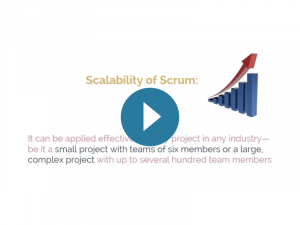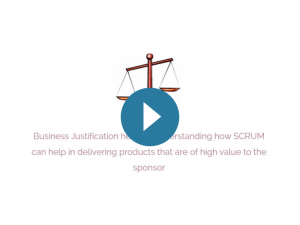Scaling Scrum for enterprise
Many large organizations face the challenge of scaling Scrum for Enterprise as they implement Scrum Teams across more and more of their operations.
Scaling Scrum for Enterprise, as defined in A Guide to the Scrum Body of Knowledge (SBOK™ Guide), is applicable to the following:
- Portfolios, programs, and/or projects in any industry.
- Products, services, or any other results to be delivered to stakeholders.
- Projects of any size or complexity.
Video supplied by ScrumStudy: 2021® SCRUMstudy.com. All rights reserved.
This video covers the additional processes that are specific to scaling Scrum at the enterprise level:
- Create Program or Portfolio Components — In this process, the Program or Portfolio Product Owner and key stakeholders identify common components and resources required for the program or portfolio. The Minimum Done Criteria are defined and all stakeholders are identified.
- Review and Update Scrum Guidance Body — The Scrum Guidance Body Recommendations are regularly reviewed by the members of the Scrum Guidance Body and are updated when and if necessary. In this process, changes in the membership of the Scrum Guidance Body are also handled.
- Create and Groom Program or Portfolio Backlog — In this process, the Program or Portfolio Backlog is created, updated, and maintained. Suggested improvements for the Scrum Guidance Body Recommendations may be made and implementation deadlines may be adjusted based on changed requirements and/or progress of the projects in the program or portfolio.
- Coordinate Program or Portfolio Components — Components of the program or portfolio are coordinated. Dependencies between projects are addressed, common impediments are discussed, and best practices are shared. Sometimes, recommendations for improvements of the Scrum Guidance Body are made.
- Retrospect Program or Portfolio Releases — In this process, the Program or Portfolio Product Owner and key stakeholders get together to retrospect a program or portfolio Release and internalize the lessons learned. Often, these lessons learned lead to agreed actionable improvements to be implemented in future releases. Sometimes, improvements to the Scrum Guidance Body may be recommended.




